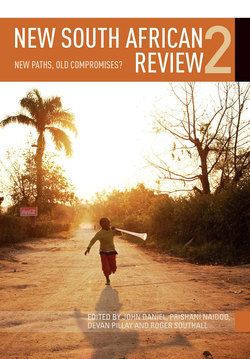Читать книгу New South African Review 2 - Paul Hoffman - Страница 13
На сайте Литреса книга снята с продажи.
NOTES
Оглавление1 An earlier period of conflict in the ANC and the Alliance occurred over its adoption of Gear in 1996 and the effects of the implementation of its policies from 1997 onwards. This involved the expulsion of several members from alliance formations, and the formation of new social and community movements, such as the Concerned Citizens Forum (CCF), the Anti-Privatisation Forum (APF), the Anti-Eviction Campaign (AEC), the Treatment Action Campaign (TAC) and the Landless People’s Movement (LPM). While these movements were responsible for a period of heightened censure of the ANC and its adoption of neoliberalism until about 2006, as well as some significant policy changes with regard to the delivery of basic services, many of them no longer exist today, or face internal conflicts. Those that have survived also exhibit a rhythm, routine and predictability with regard to struggle that makes them less threatening to the ANC-led government and less successful in making and winning demands.
2 It should, however, be noted that these conflicts within the alliance have also highlighted levels of intolerance and authoritarianism among its members, and that the very existence of a culture of caucusing, cliques and cabals demonstrates undemocratic practices dominating the functioning of the ANC and the broader congress tradition.
3 Residents of Bokfontein come from two different experiences of forced removals – from evictions from farms in the Hartebeespoort dam area, and from forced removals from land they were occupying illegally in Meloding.
4 Langa and Von Holdt note that the number of sites expanded rapidly, from four pilots to fifty-six, in the space of eighteen months.
5 It should be remembered here that the constitutional protection of the right to private property (a concession by left forces within the ANC and its alliance partners) meant that any conceptualisation of BEE or B-BBEE could not enforce any redistributive measures with regard to racialised patterns of ownership entrenched by apartheid that did not rely on market mechanisms and business rationalities.
